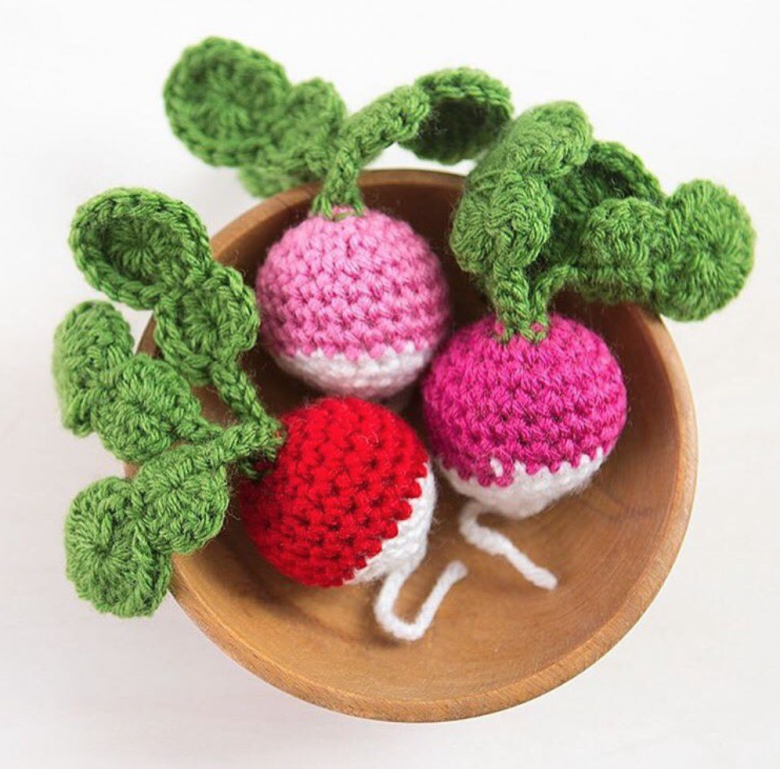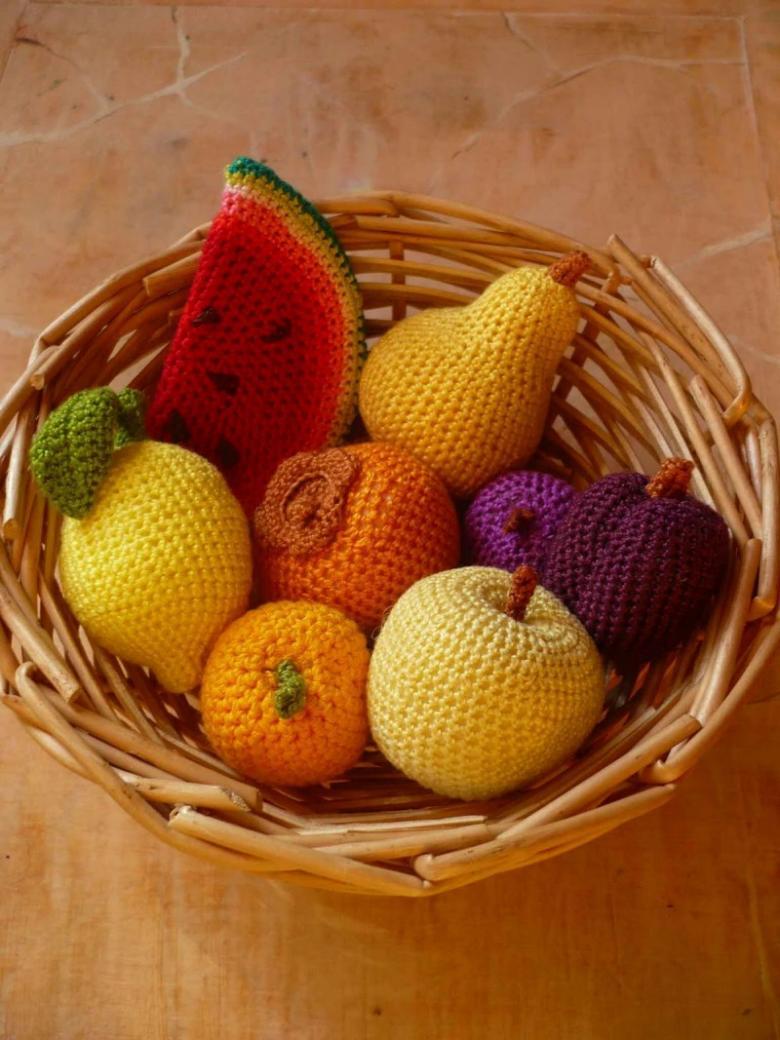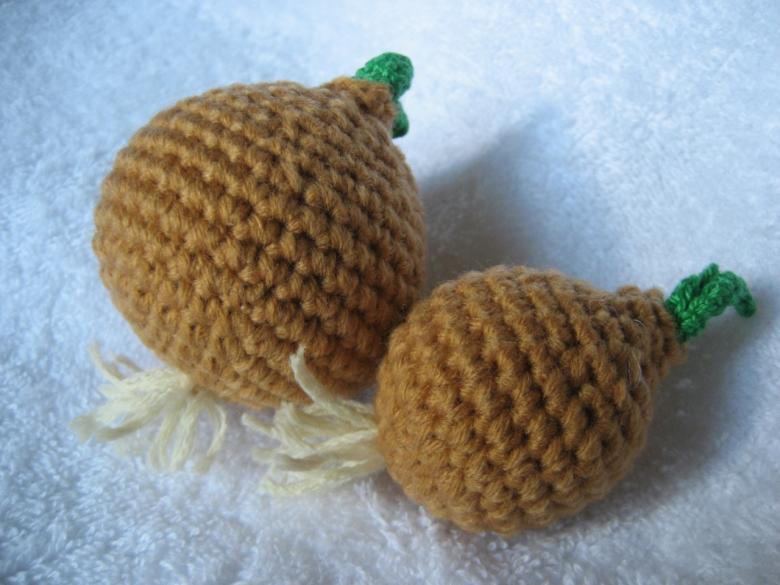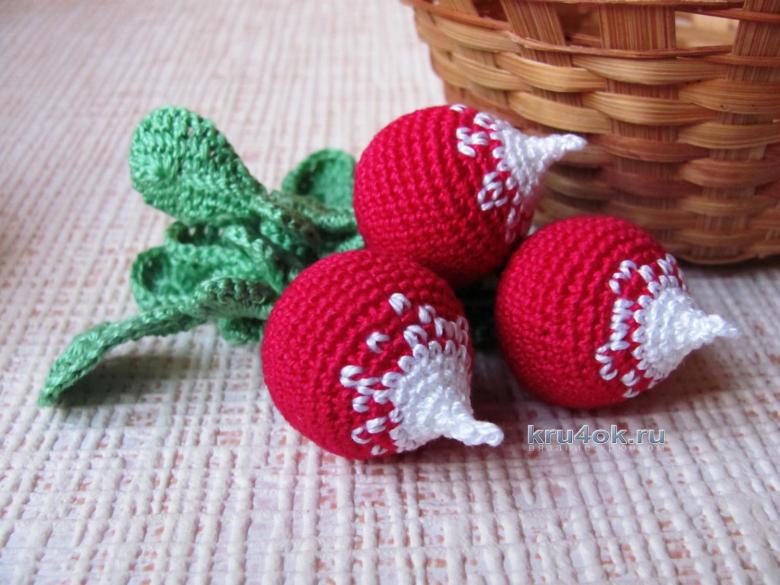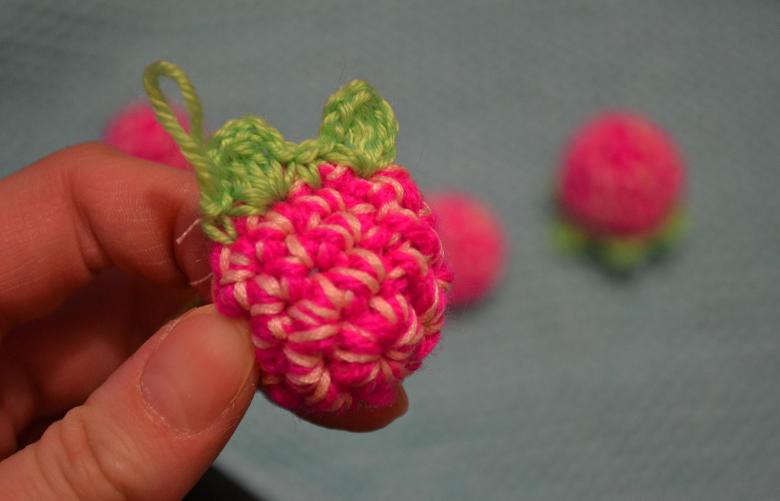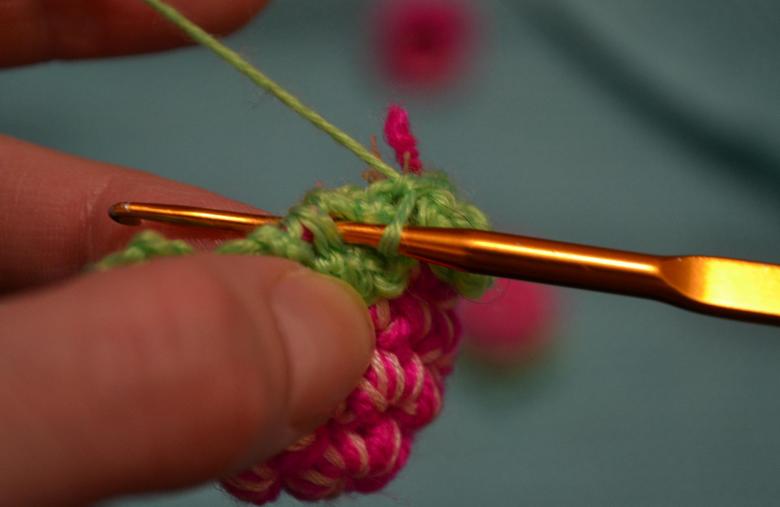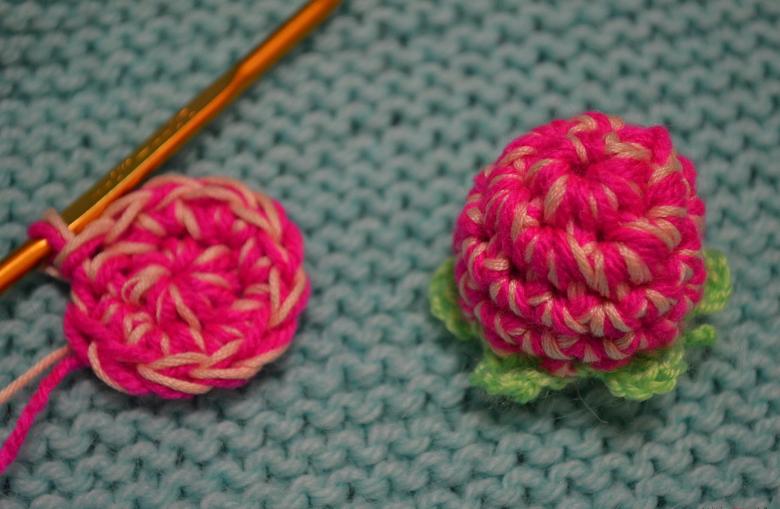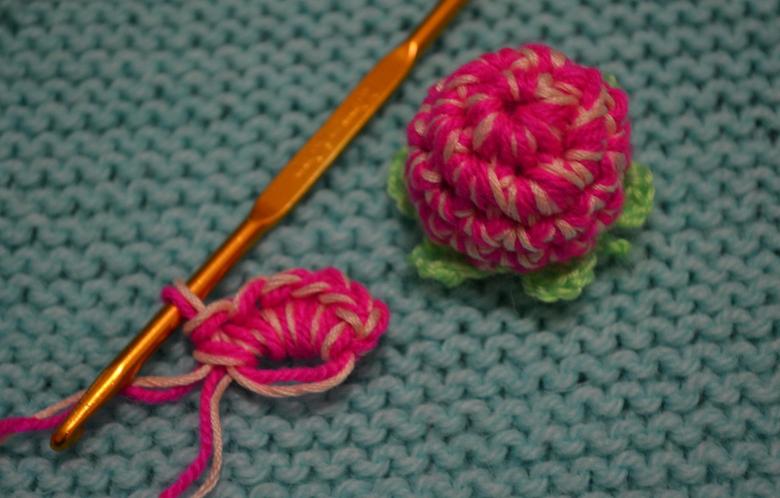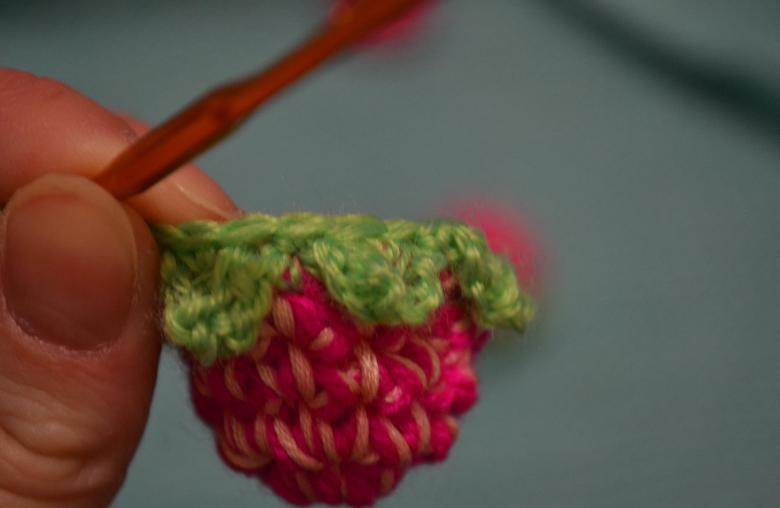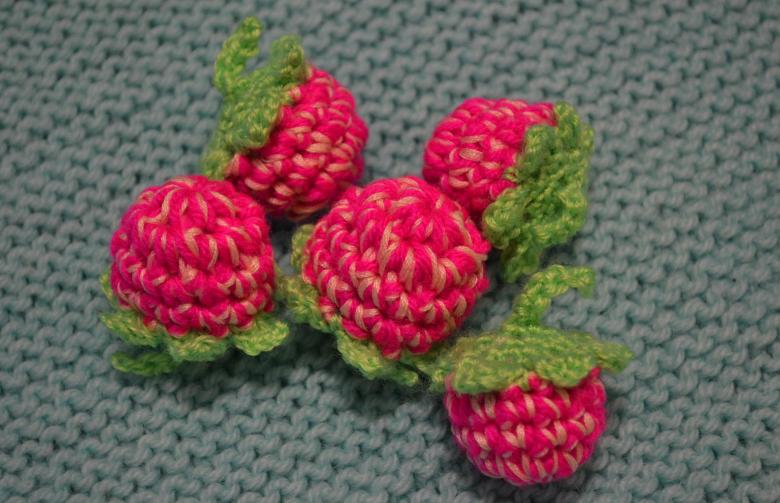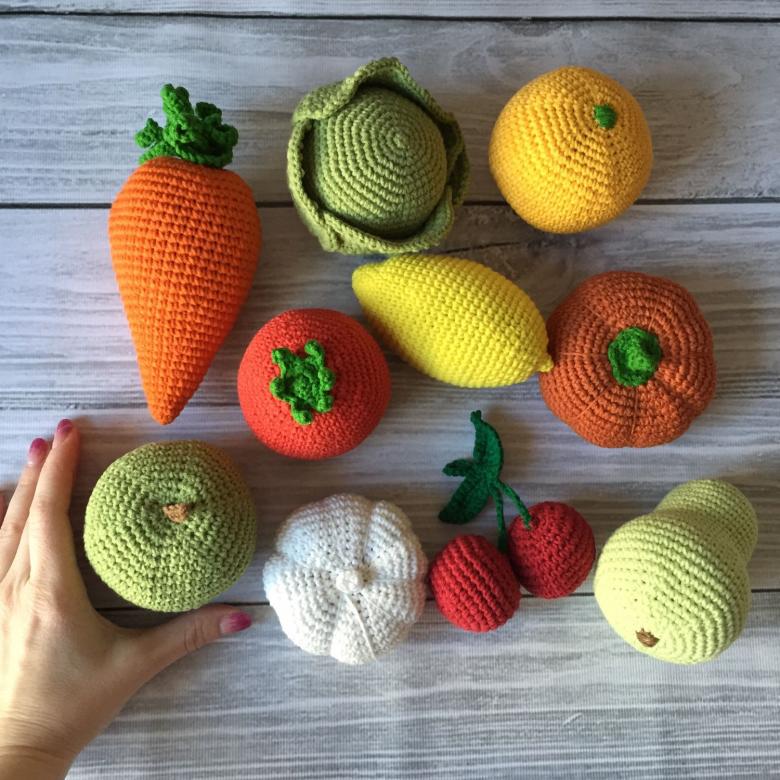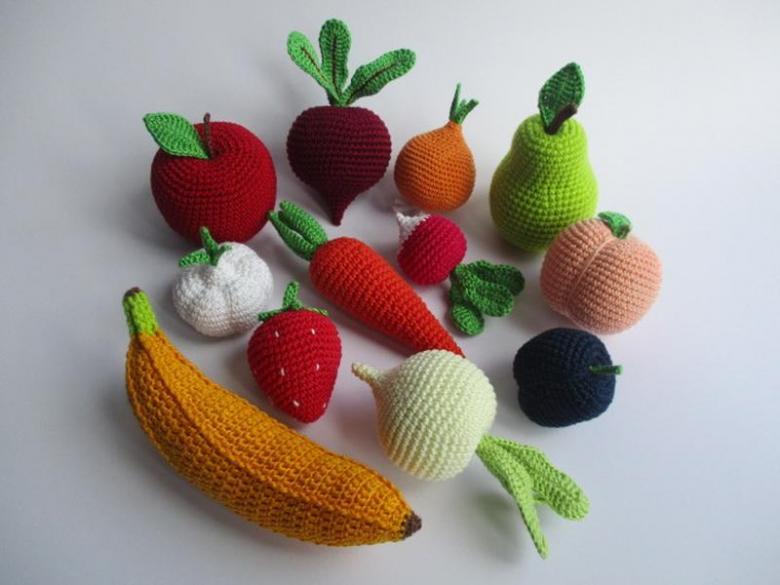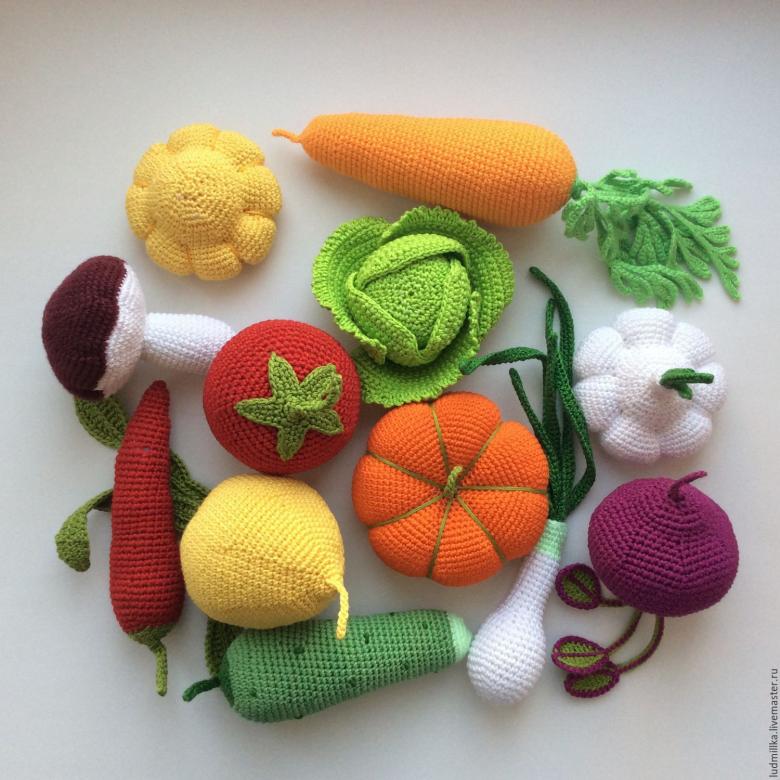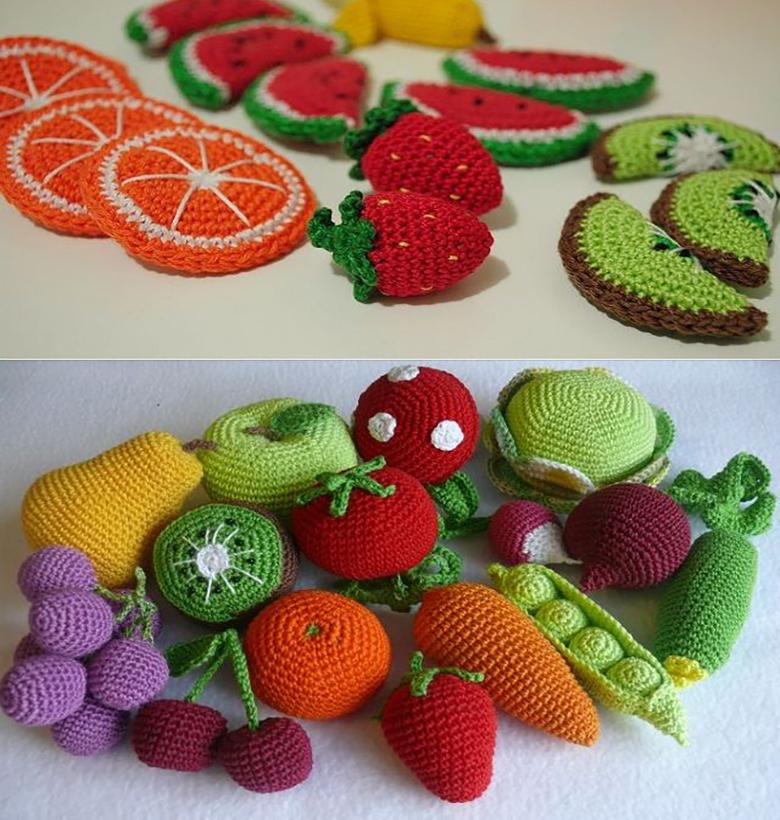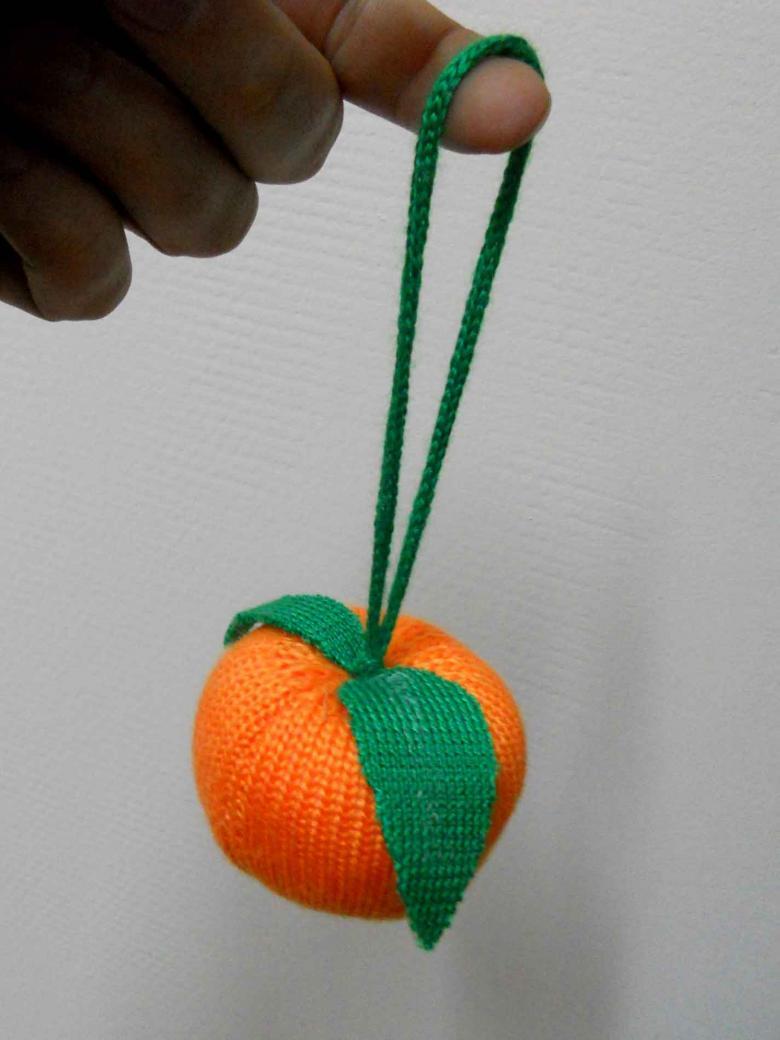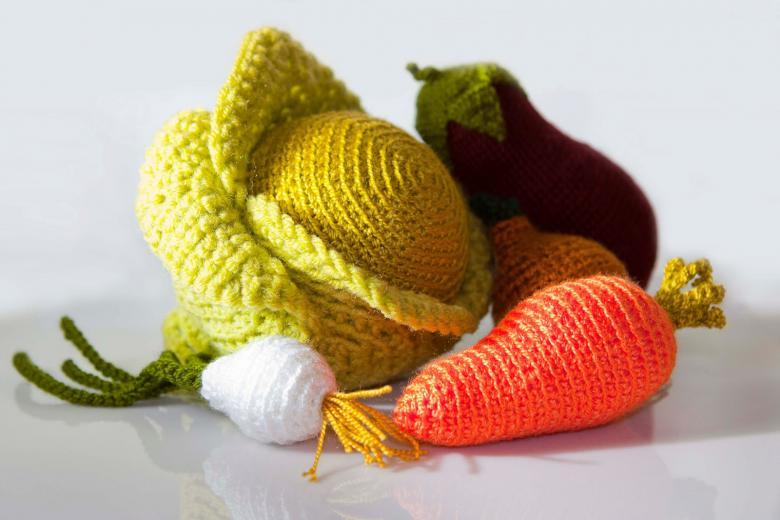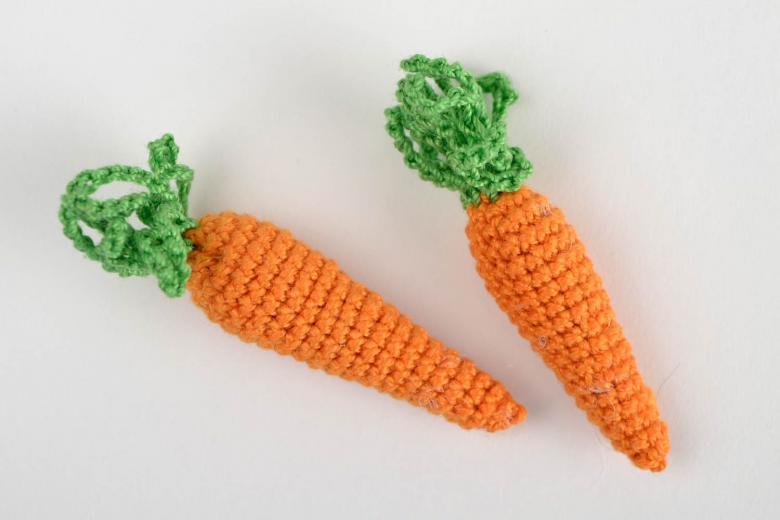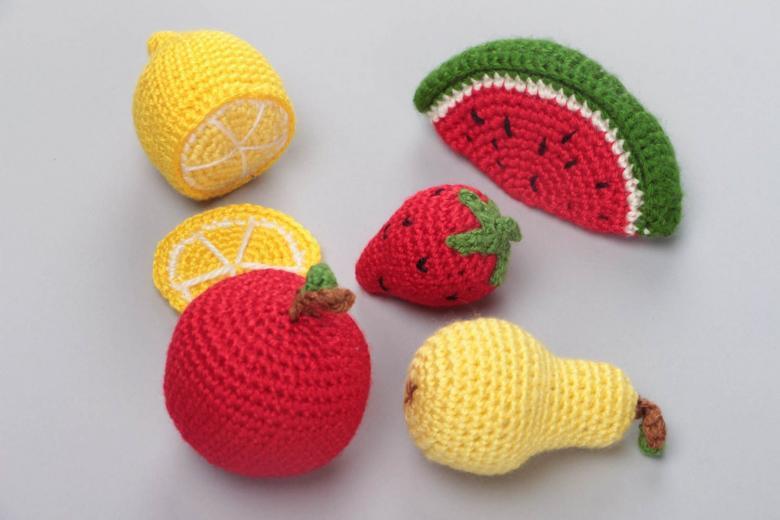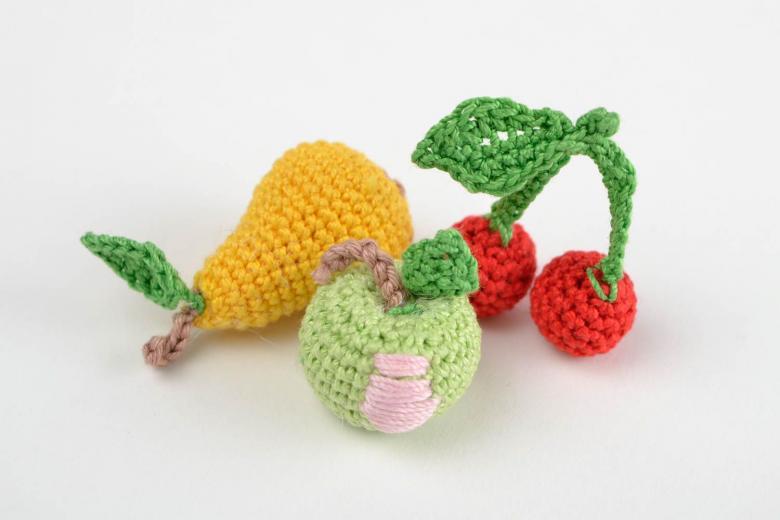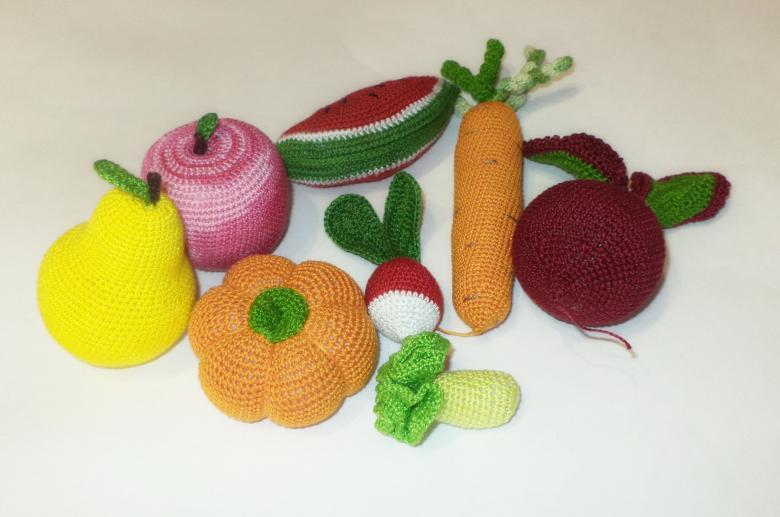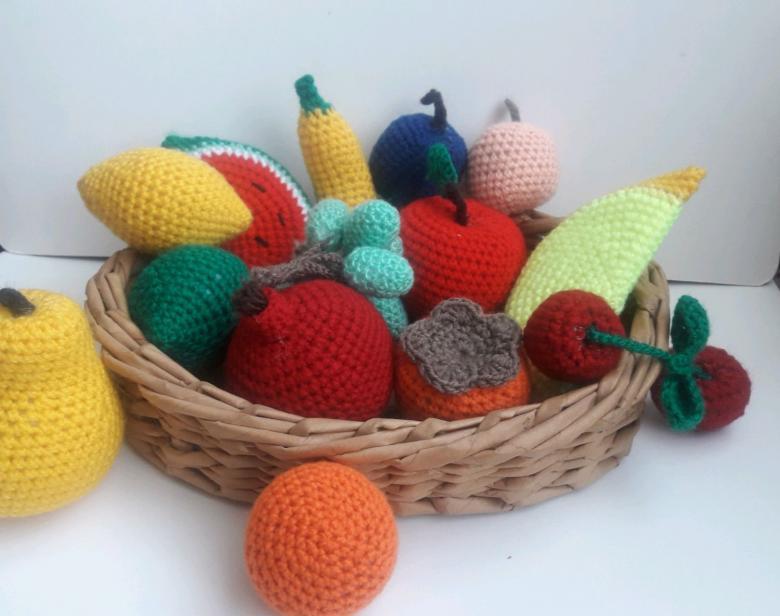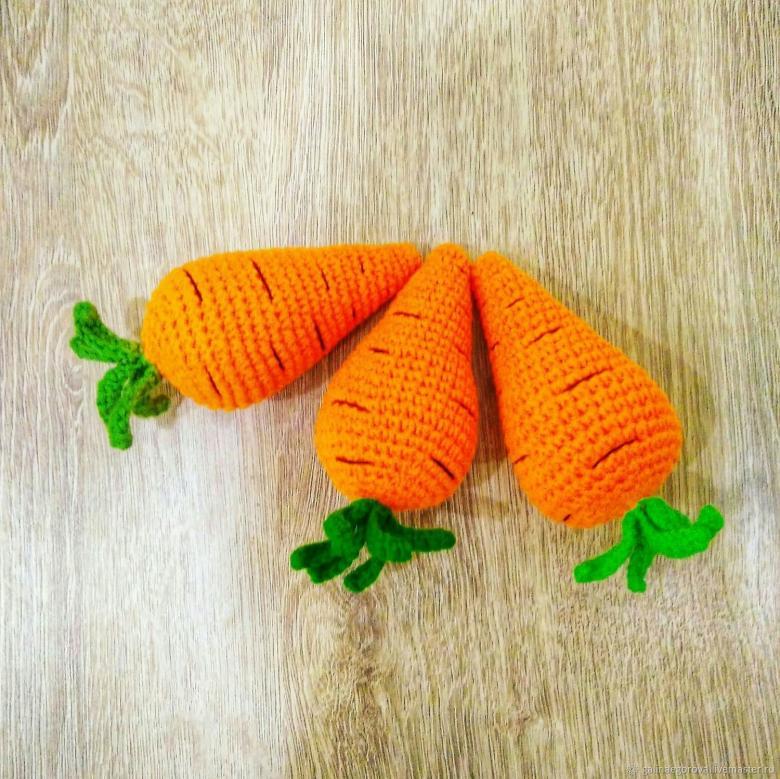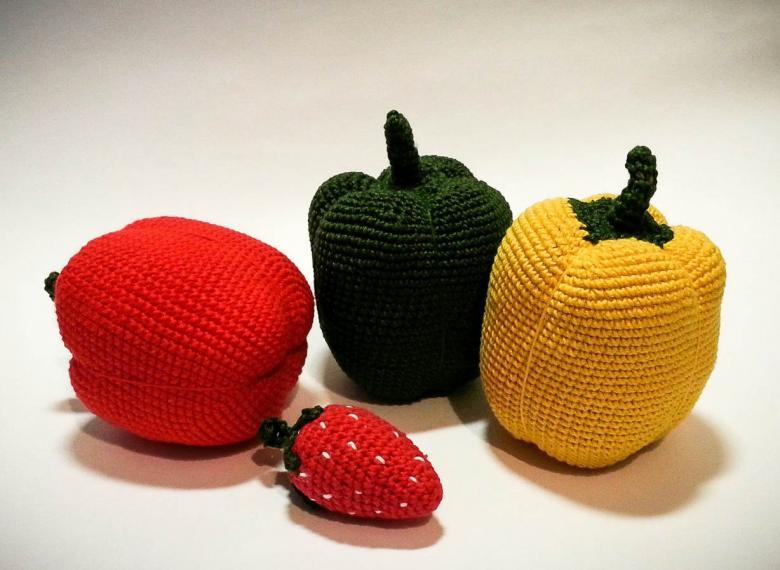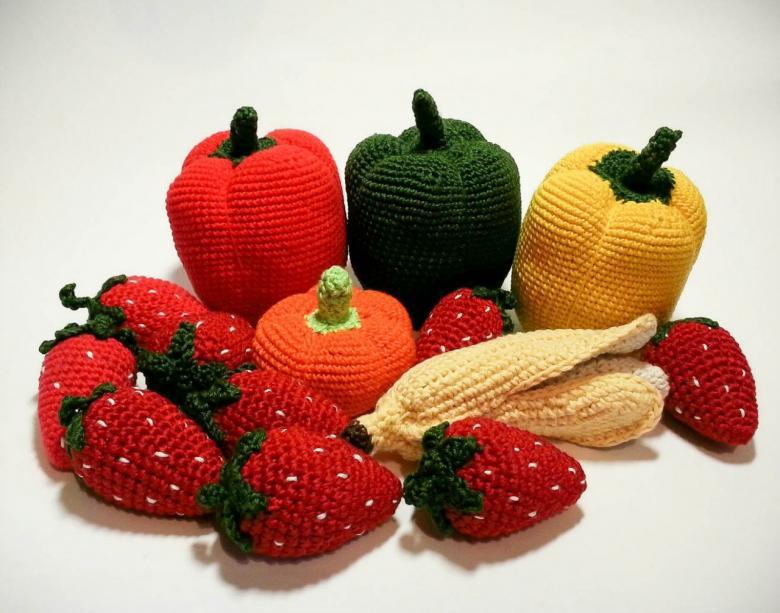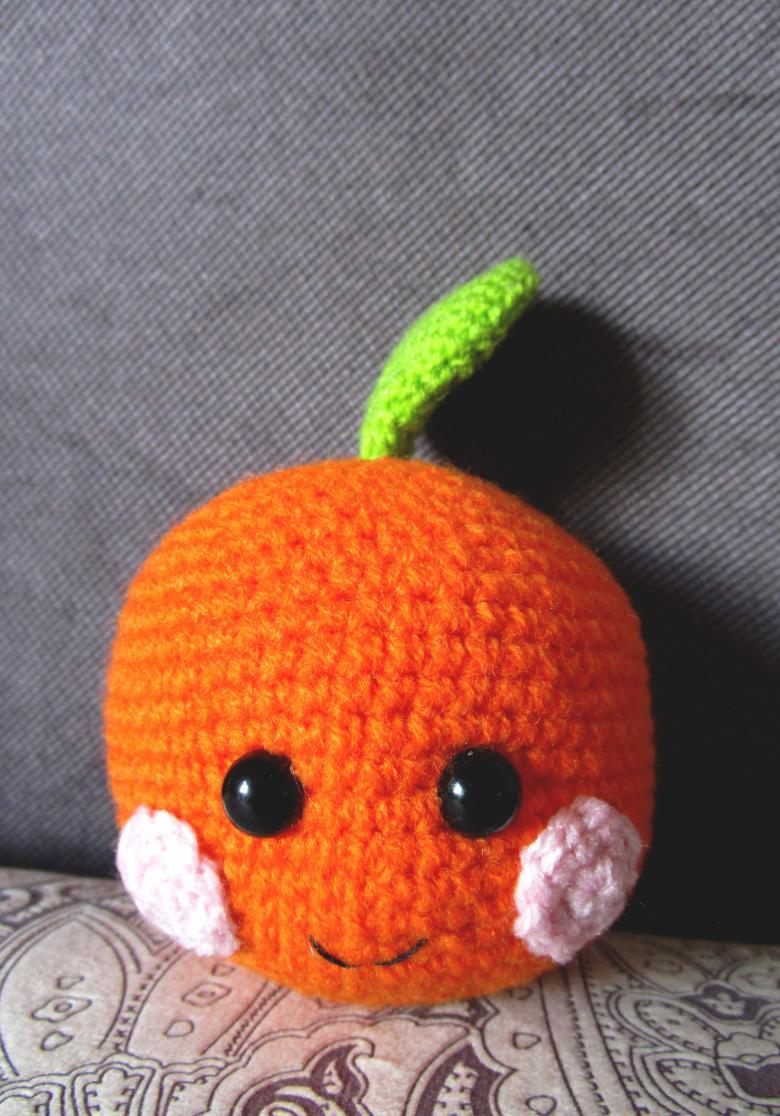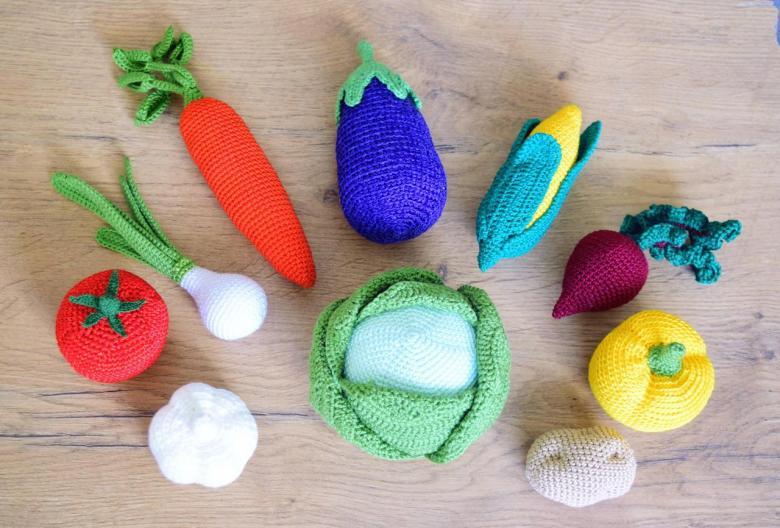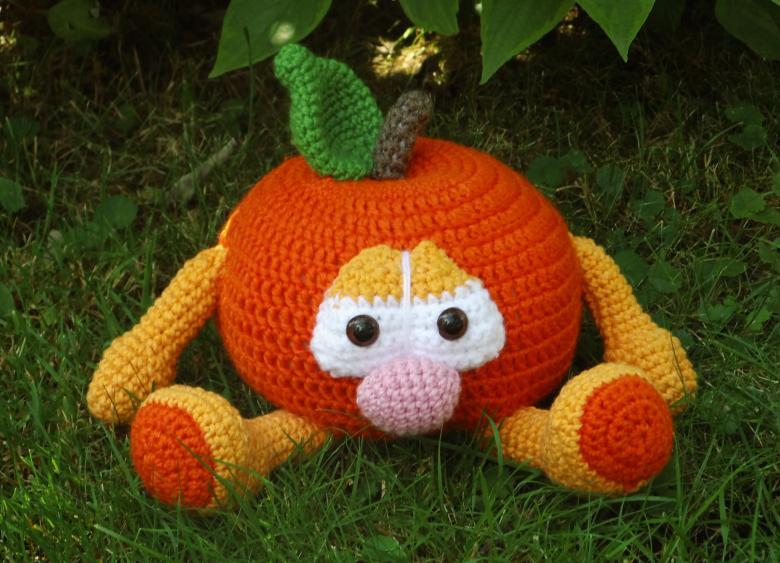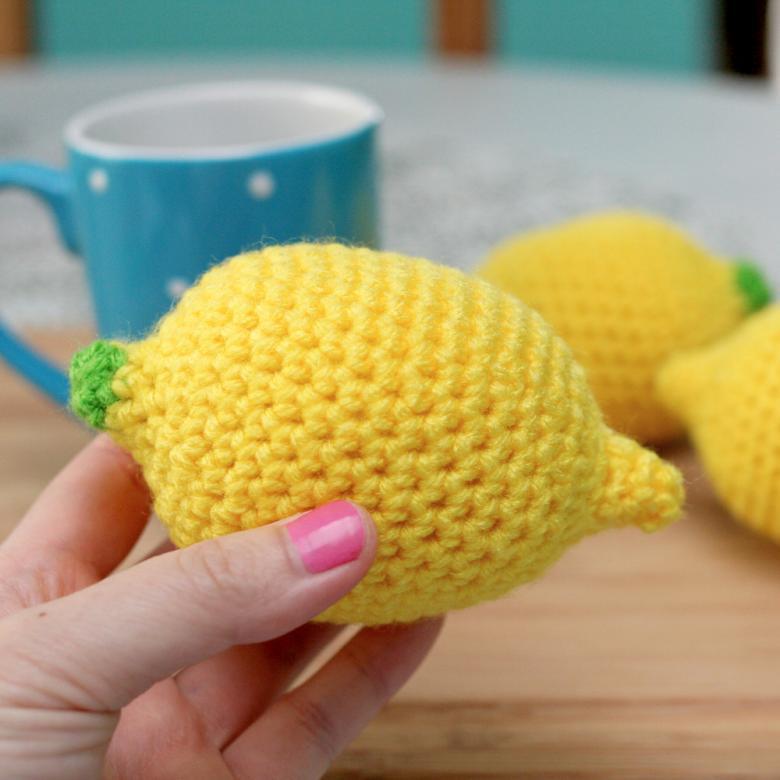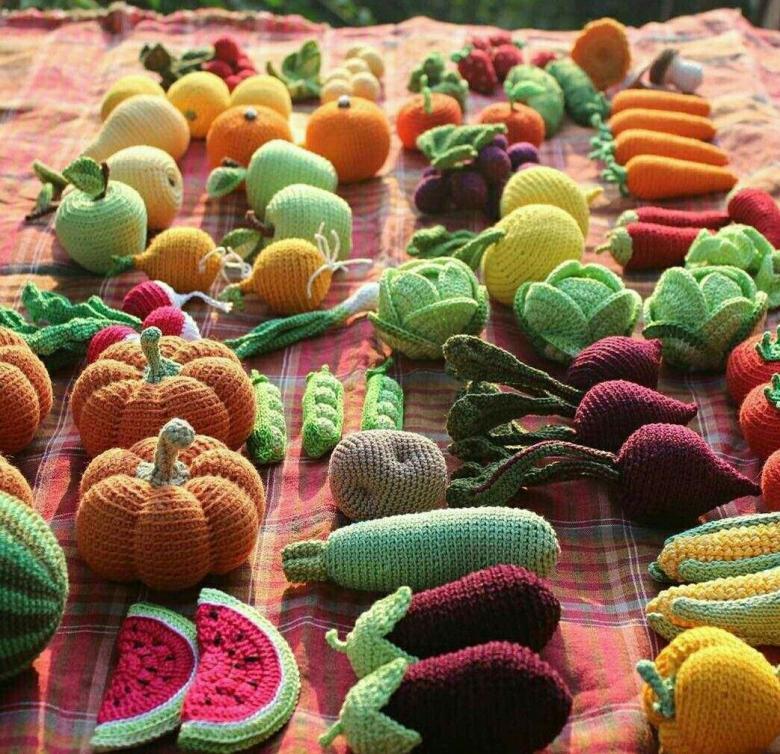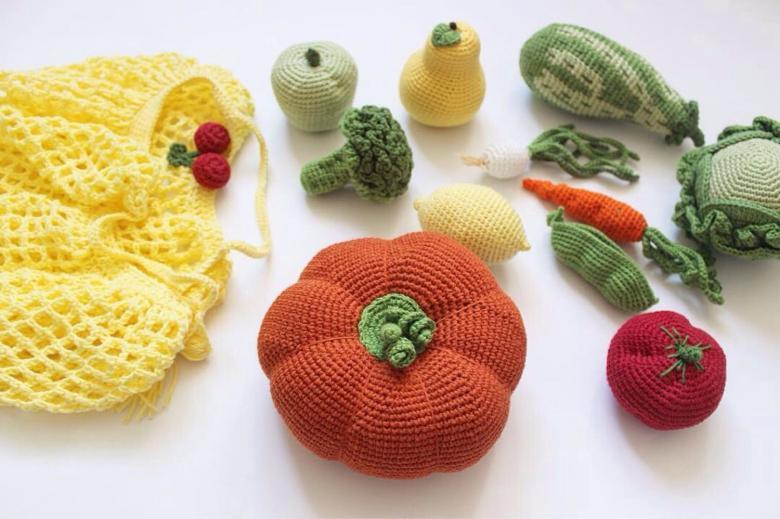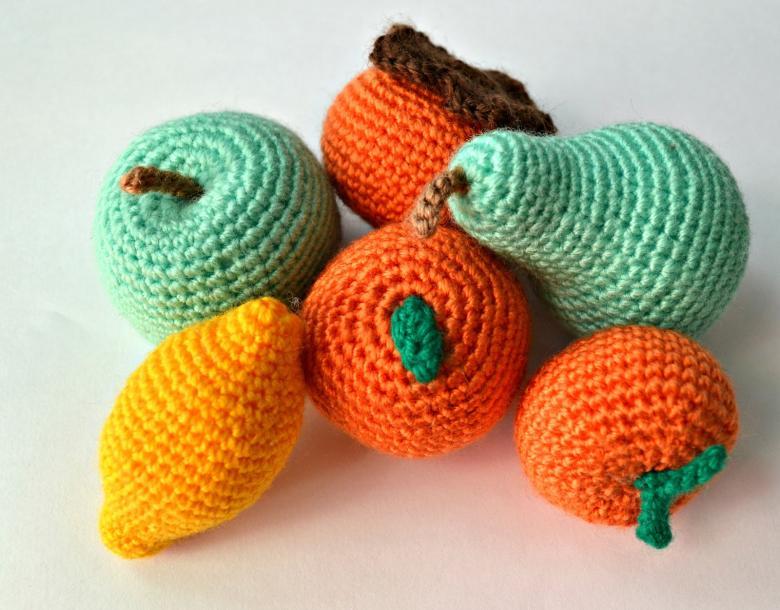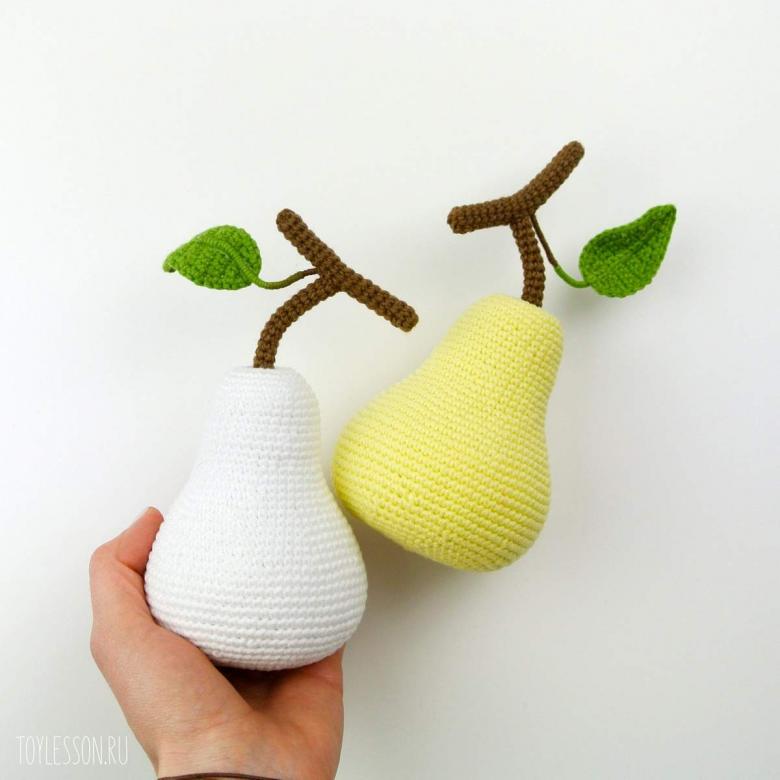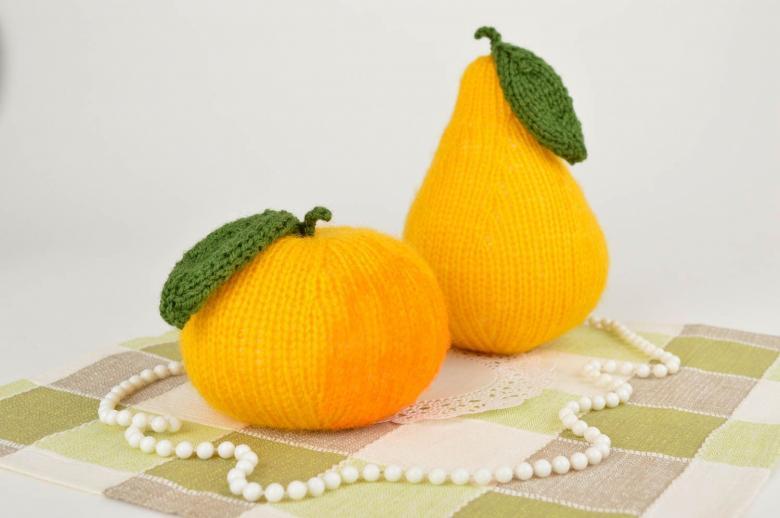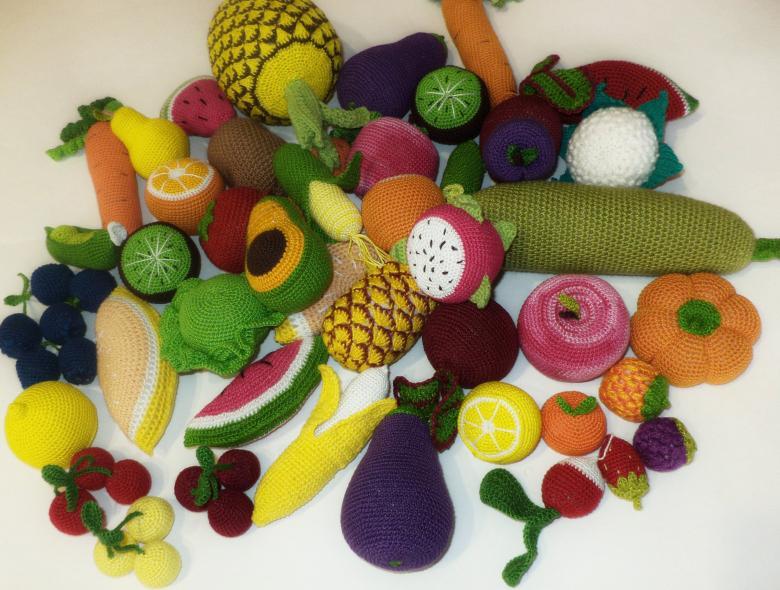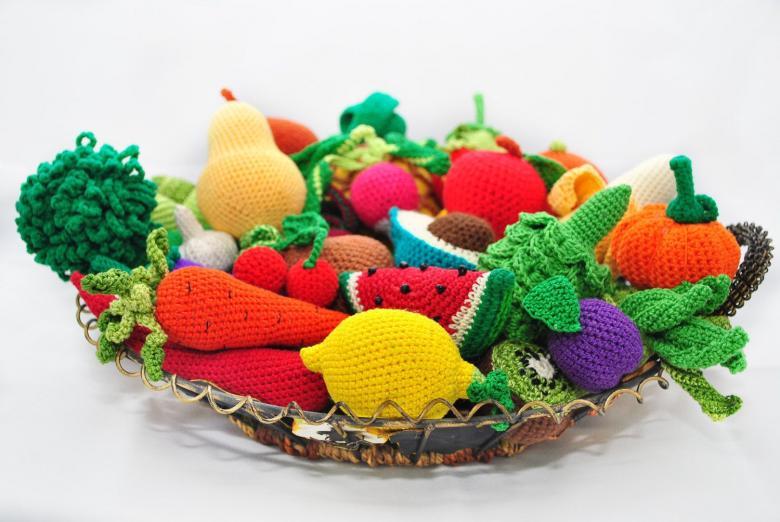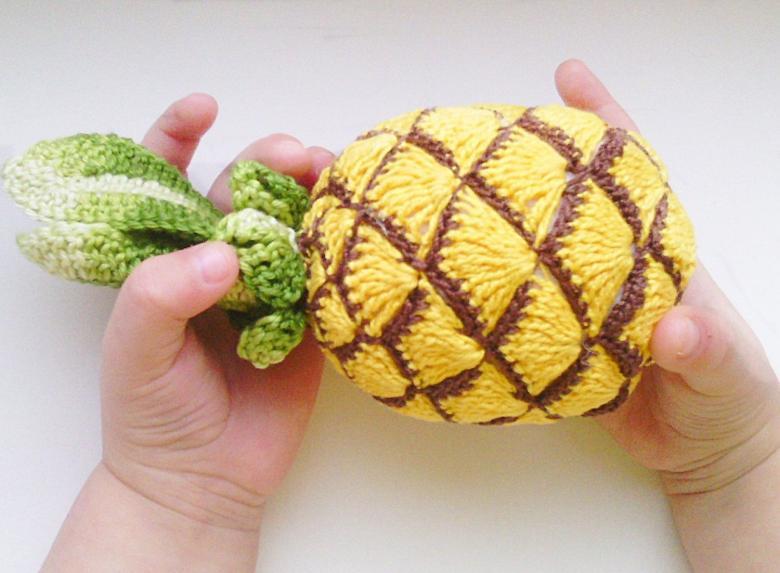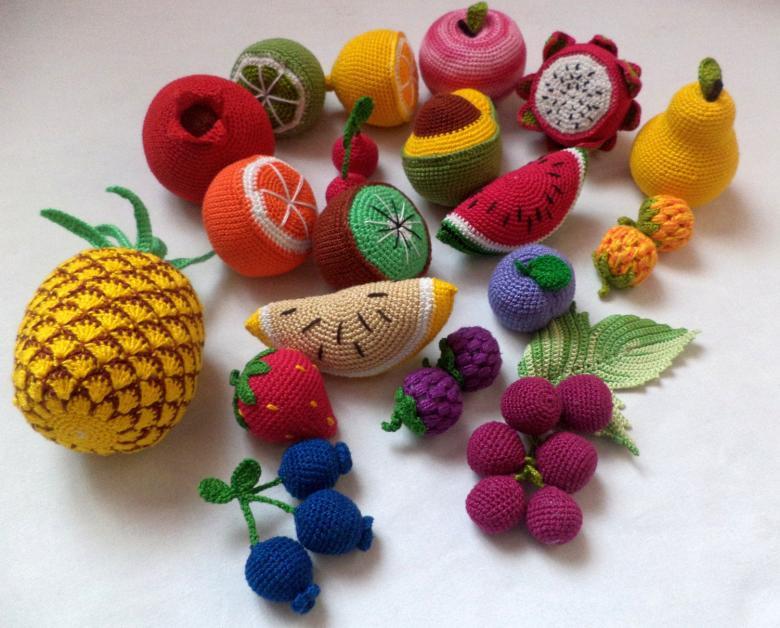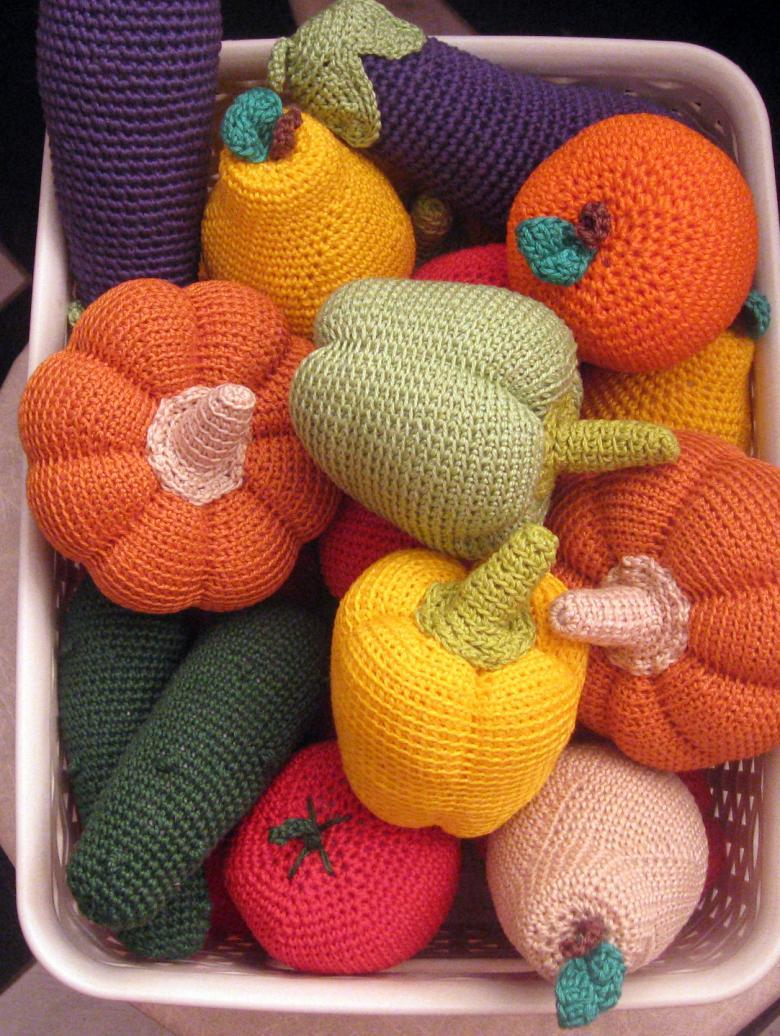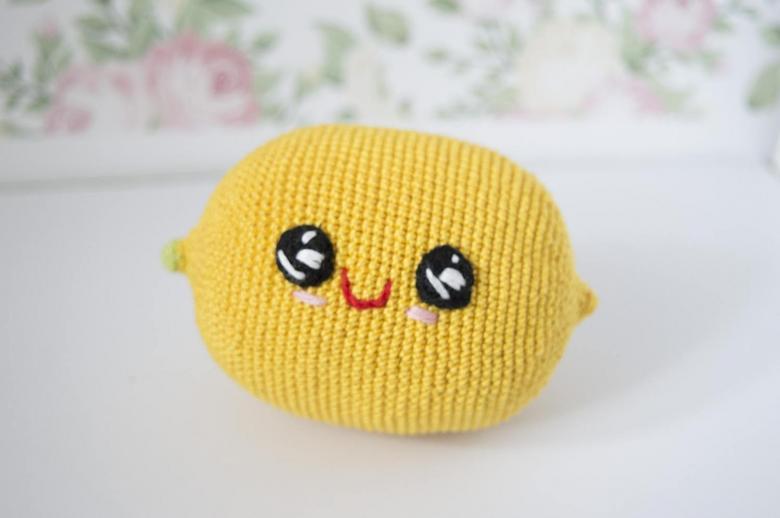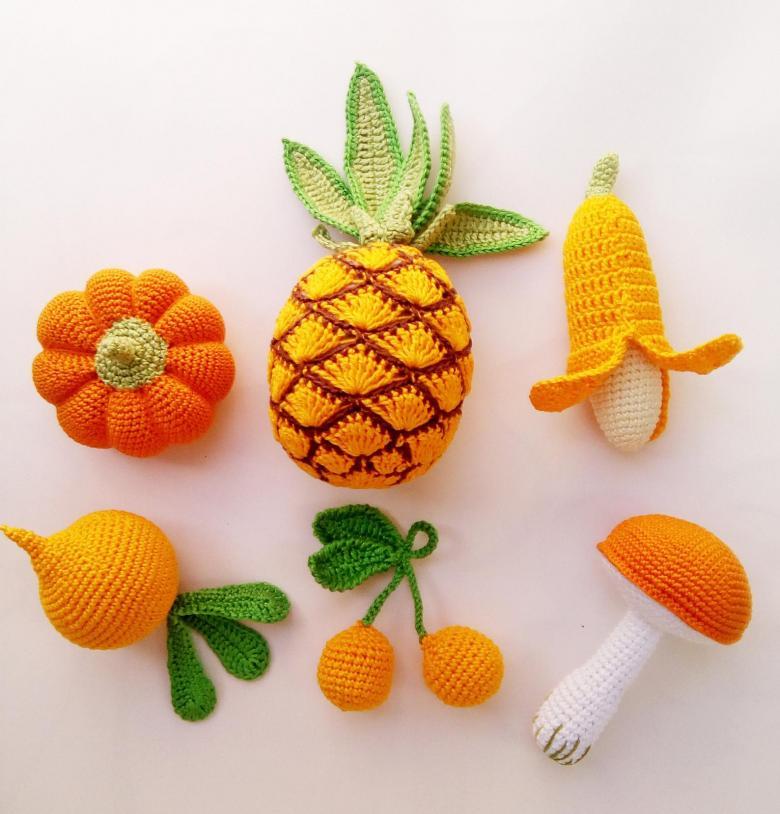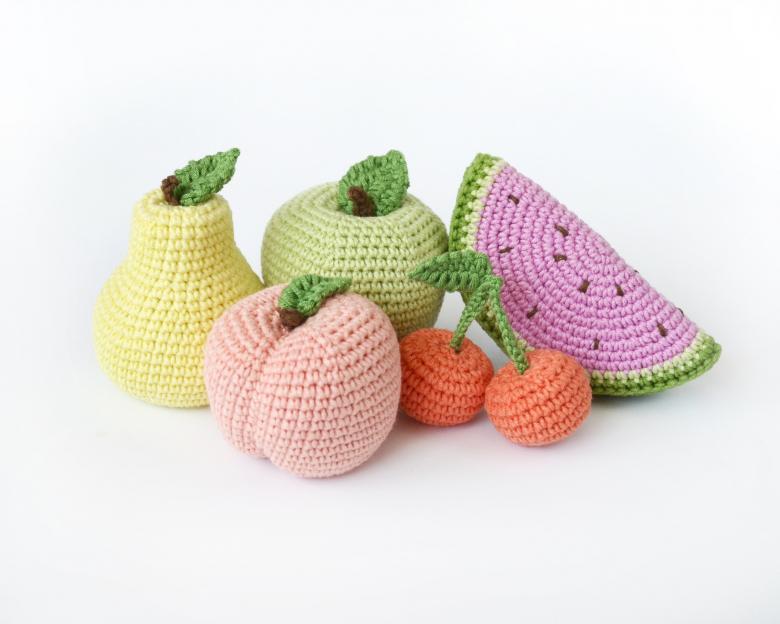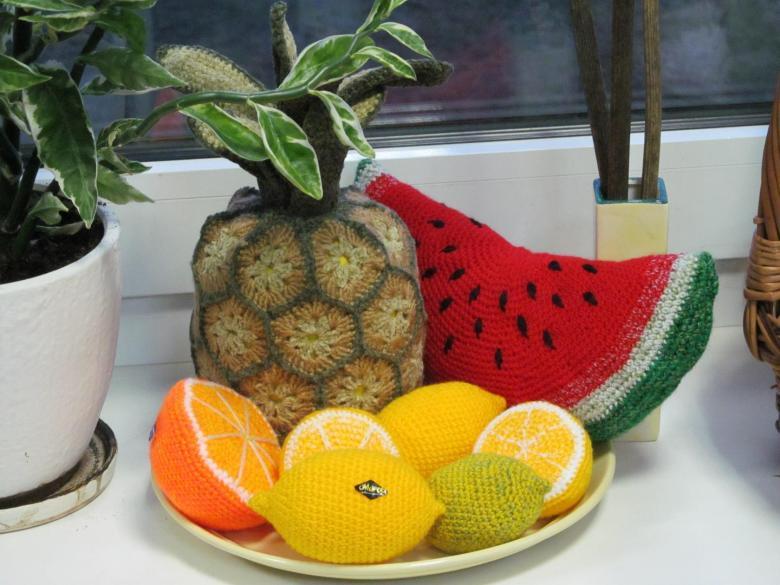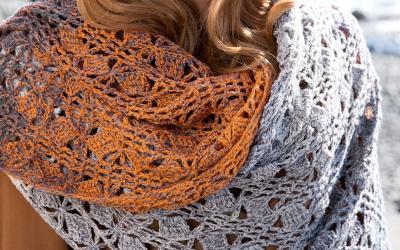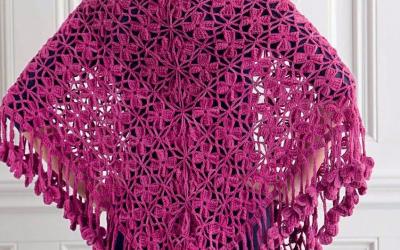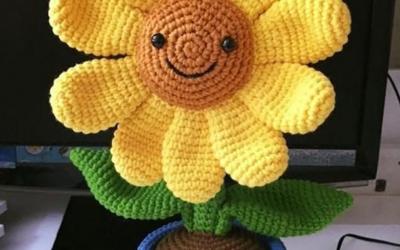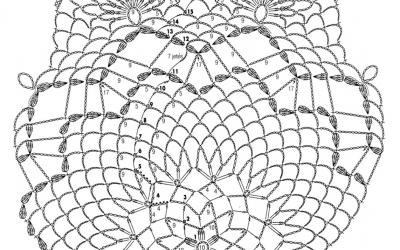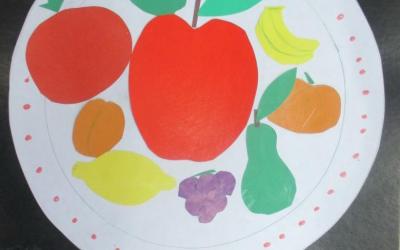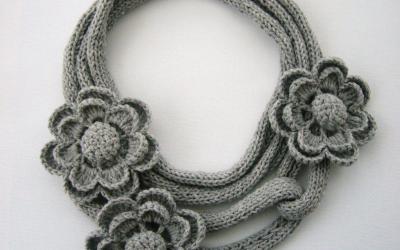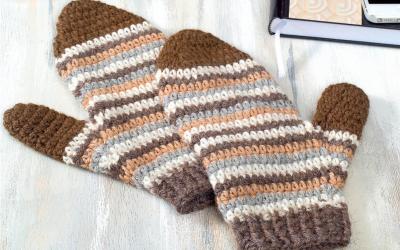Crocheted fruits and vegetables - schemes with detailed descriptions and photos
Recently, a variety of knitting is especially popular with needleworkers. After all, with the help of such tools as needles and crochet, it is possible to create many original things. Thus it is possible to produce not only clothing, but also intended for interior decoration products. With the help of hook or spokes also make plaids, curtains, tablecloths, small rugs.
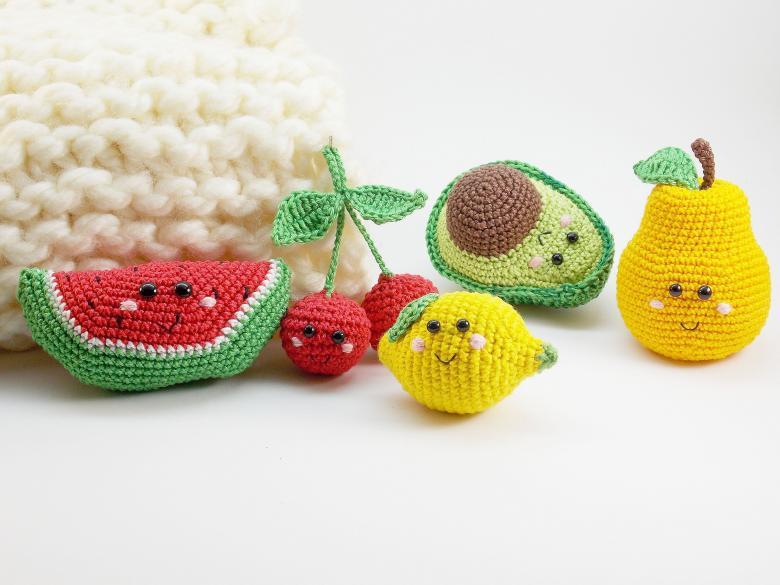
When decorating the interior is actively used and crocheted fruit. Such items can be neatly placed in a vase standing in the kitchen. The crocheted fruits of large size also look beautiful, successfully replacing the usual sofa cushions.
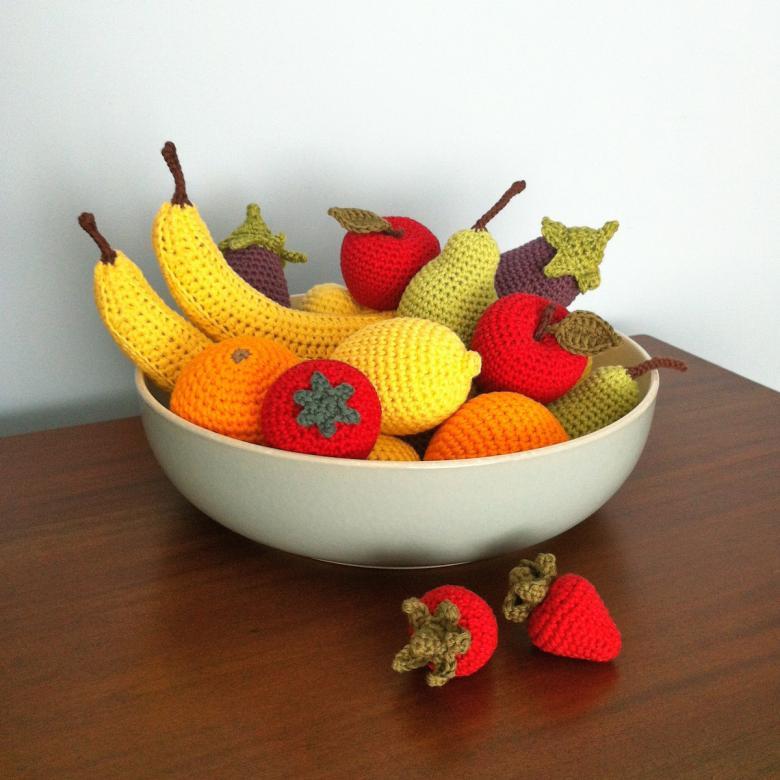
Variety of fillings
There are many schemes of crocheted fruits and vegetables. The easiest to perform is considered to make an apple. As a filler for such a crocheted fruit can be anything.
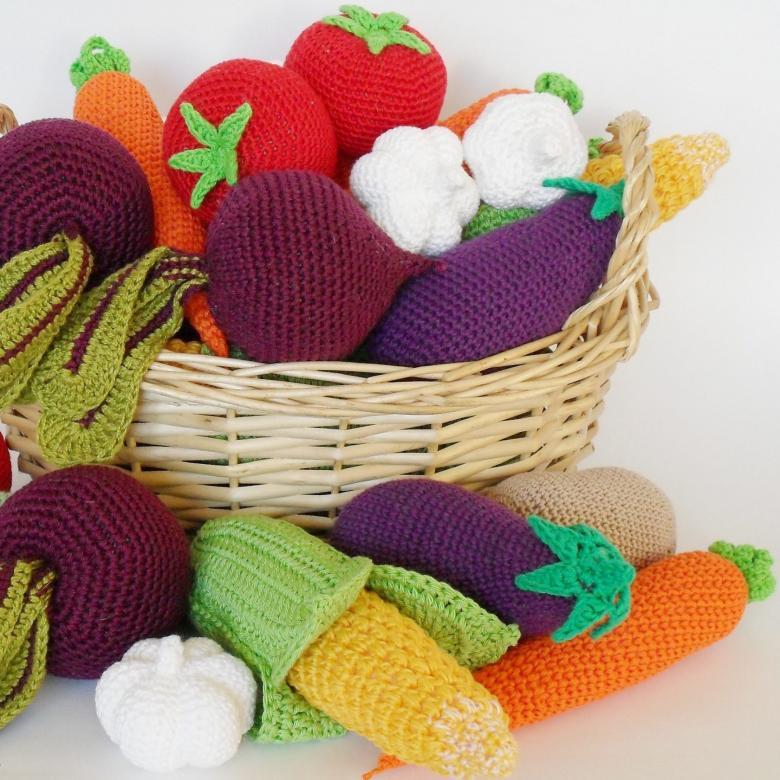
When using absorbent cotton, the apple will be softer, but it will not be washable. Therefore, sintepuh and sintepon are considered more convenient materials in this regard.
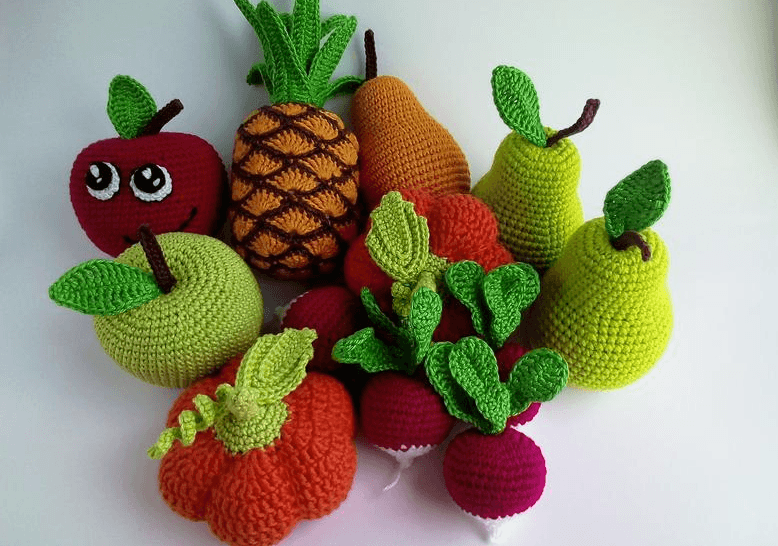
Pay attention! As a filler for a crocheted apple, you can also use cherry stones or dried nuts. Such a fruit will be a wonderful developing toy for a child.

Needed Materials
Description of crochet vegetables and fruits can be found on a variety of thematic sites. For their manufacture you may need:
- thread of the appropriate color;
- crochet. Its size is chosen according to the type of yarn;
- filler;
- scissors, designed for cutting threads.
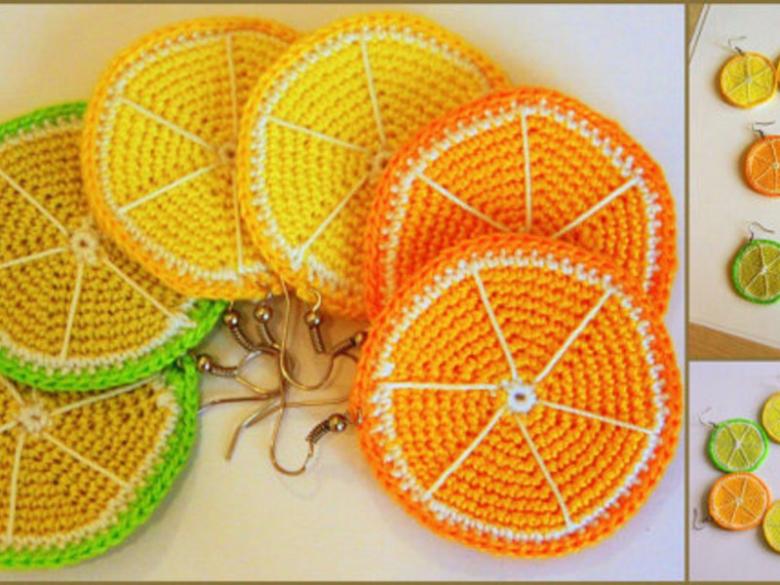
An excellent option for making crocheted fruits and vegetables consider acrylic yarn. Its main advantages are:
- many shades;
- relatively low cost;
- bright, saturated colors;
- the possibility of obtaining a beautiful texture of the knitted fabric (due to the optimal thickness of the yarn).
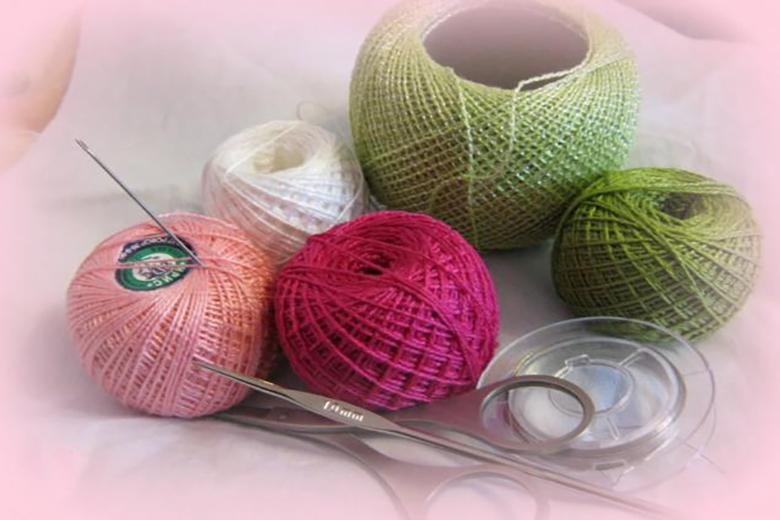
Knitting step-by-step sequence
Pears can be both green, yellow or red. Therefore, the yarn for making such fruits is chosen according to your taste. Only the shape of the final product is unchanged.
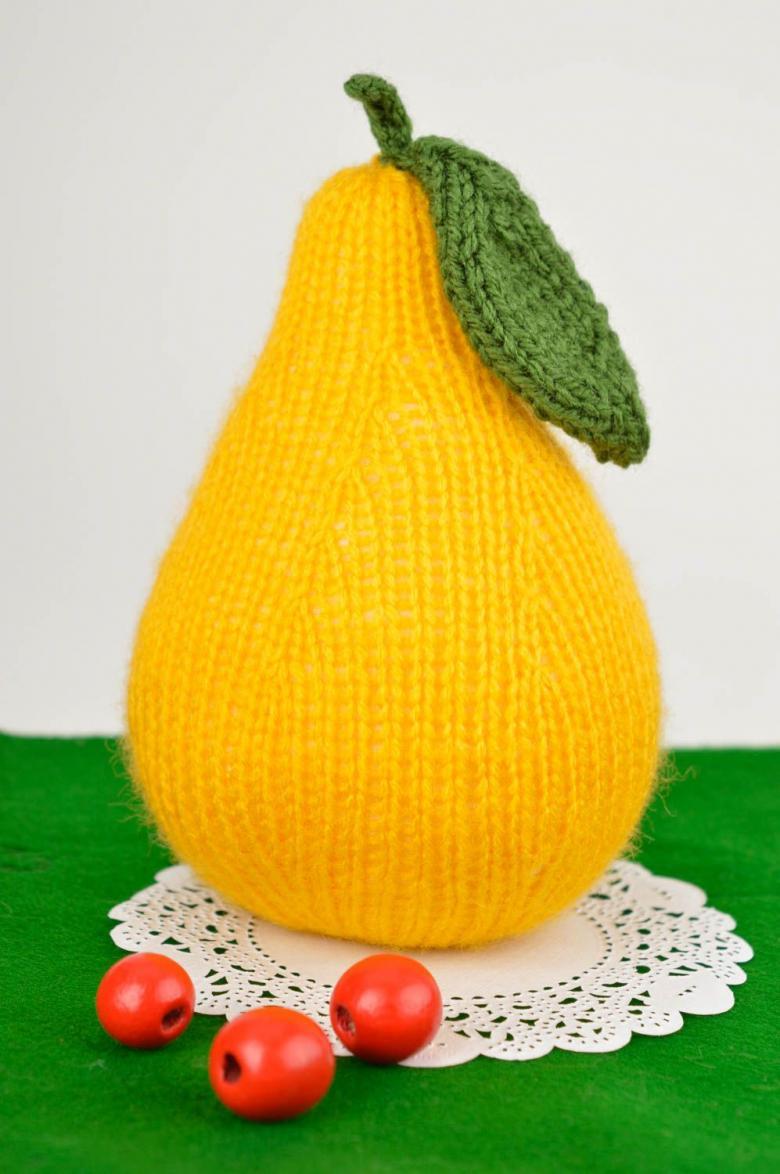
The knitting process itself looks as follows:
- It is necessary to dial loops and knit the first 5 rows in this way. This should obtain an even rounded surface.
- The next row is knitted in the same way.
- After that in the row there is an increase of 3-5 stitches.
- Then knit another 5 rows without change.
- Then the number of loops are gradually reduced in the next 3 rows (up to half of their number).
- Another 6 rows are knitted without any changes.
- Pear must be filled with stuffing.
- Half of the loops are reduced.
- After that, 4 stitches in the row, then - 2 more times 2 stitches.
- The thread is cut, the remaining loops are fastened to "shrink" the finished product. Additionally you can knit a stick and a leaf.

Finished crocheted pear will be a pleasure to watch. To make it more understandable, you can view a video on crochet toys (fruits and vegetables).
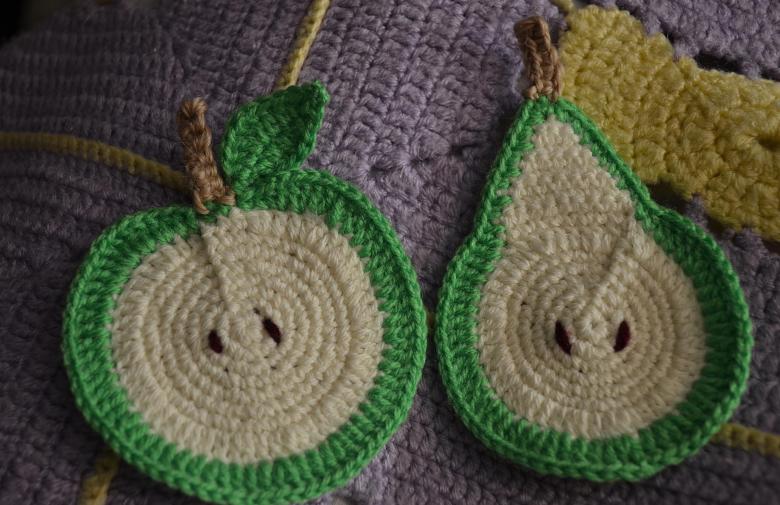
Making a turnip
Many children with a great passion listen to the popular fairy tale about the grandfather and grandmother, who could not pull a turnip of unseen size out of the ground in any way. To find such a huge root vegetable in the store is difficult. Therefore, you can tie a turnip by yourself as follows:
- Dial the loops.
- Three rows are knitted in a circle, without making additions or subtractions.
- In the next 3 rows the number of loops is doubled.
- The next row is done without additions. Then add 1/3 of the total number of stitches.
- Up to 8-9 rows knit without additions.
- When creating the next 6 rows, the loops are gradually reduced.
- Then the tip of the root vegetable should be tied with a thread of green color.
- Knitted turnips complement the tops.

By analogy, you can also make a beet or a radish. When making them, you should additionally make a long spout.
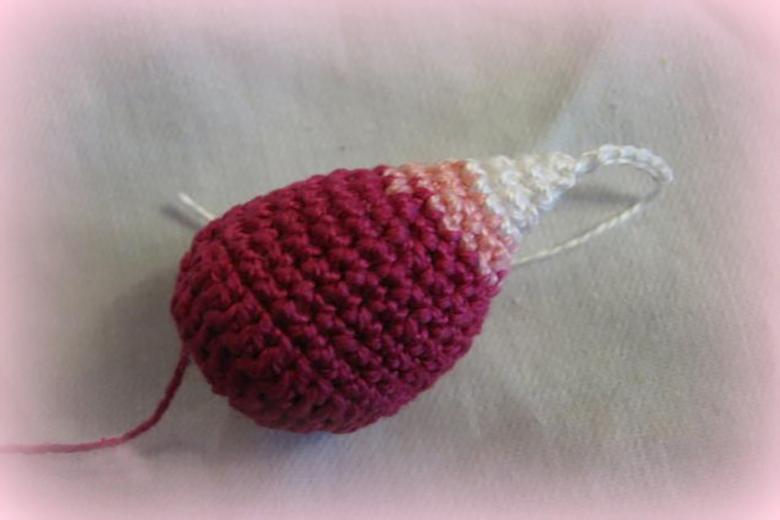
Great ideas for knitting fruits and vegetables
In addition to apples, you can knit a large number of other original fruits and vegetables, favorably complementing your composition. These can be:
- kiwi;
- oranges;
- pineapple;
- pomegranates;
- melon.
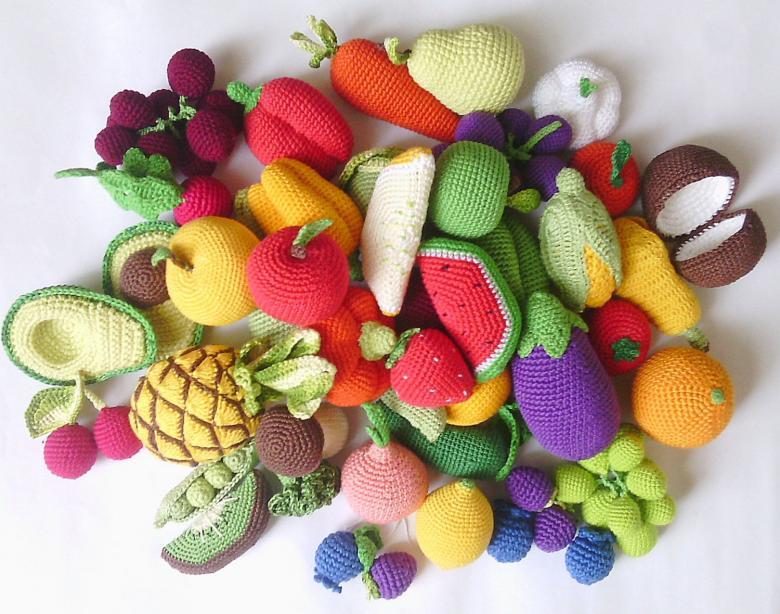
The technique of knitting with motifs is particularly suitable for making a pineapple. The most suitable motif is the image of an African flower in a hexagon. All motifs need to be stitched together (in the shape of a pineapple). The leaves are knitted separately and neatly sewn on top of the fruit.
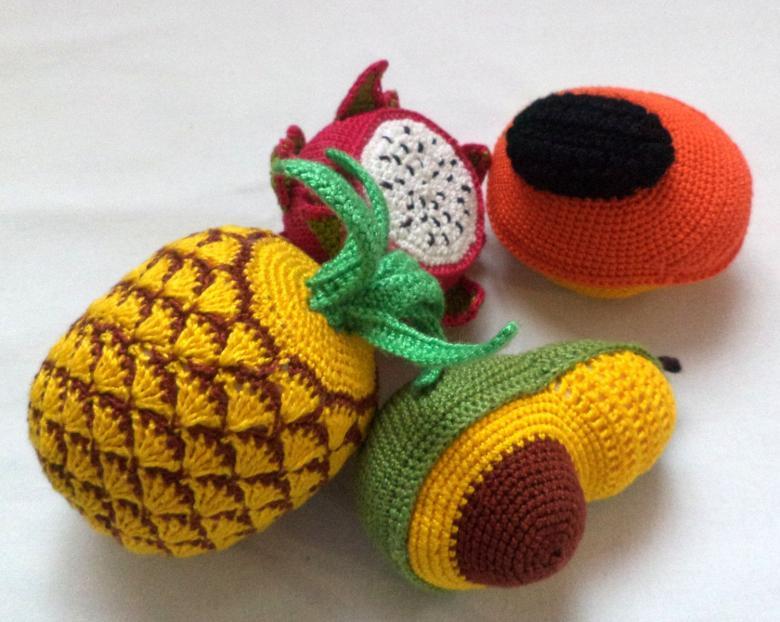
Watermelon can be made in the form of a striped ball with as if cut off a slice. Such a composition can be an excellent decoration of a sofa or a table. Such a colorful watermelon is sure to please young children, who will be happy to use it as a toy.
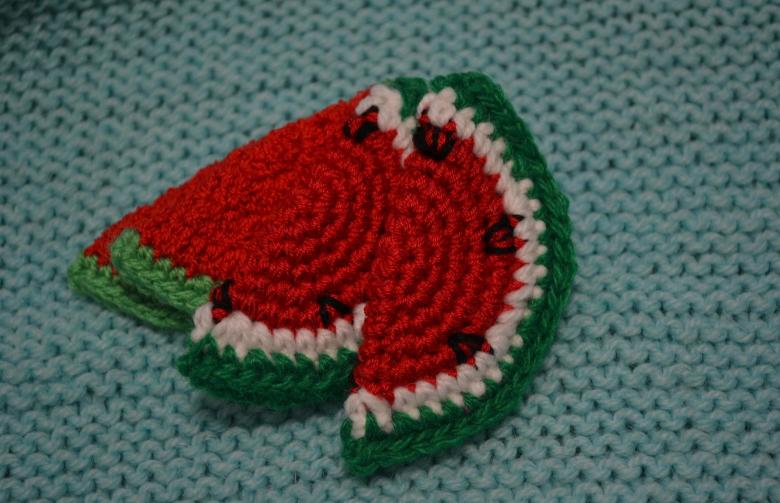
If you wish, you can knit small slices of fruit, tiny berries. They make excellent magnets for the fridge. Another possible area of application of mini-fruits - making handmade brooches, for fixing which on clothes it is necessary to attach a small pin.
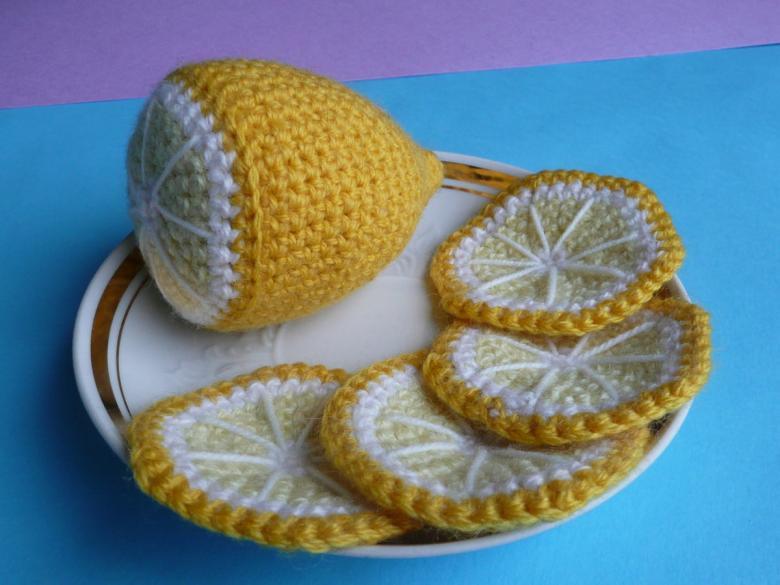
Pay attention! Crocheted fruits and vegetables can also be used as bright, colorful decorations for the Christmas tree. Such original toys will give a great mood.
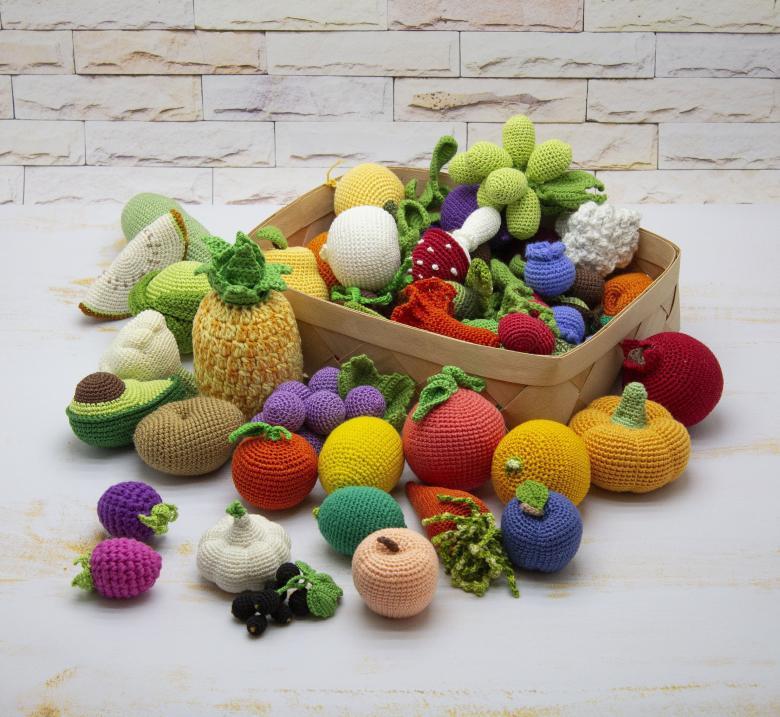
Where to start?
According to experienced knitters, you should start by making simple vegetables or fruits. For example, a mandarin. Further, you can tie grapefruit, orange, apple or tomato by analogy. In this case, the last vegetable should be supplemented with a stalk of fruit.
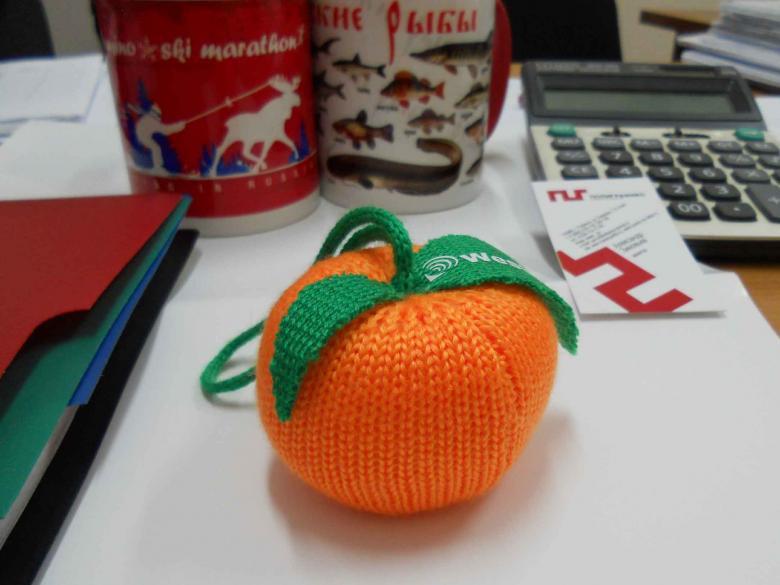
After that, the tomato is stuffed with filler. Then it is necessary to pull the place, where the stalk is located, inward and fasten the thread securely. Then the product is finished knitting to the end. Similarly made and apple.
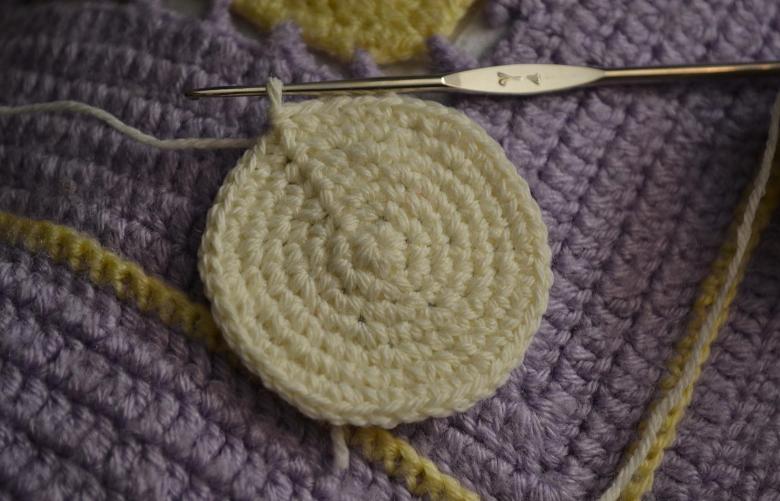
But the knitting process is completed a little differently. Apple should be made almost to the end, stuffed. Then a twig with a leaf is sewn to the fruit, the needle is carefully pulled through the center of the fruit. Then the thread should be securely fastened, hide its tip.
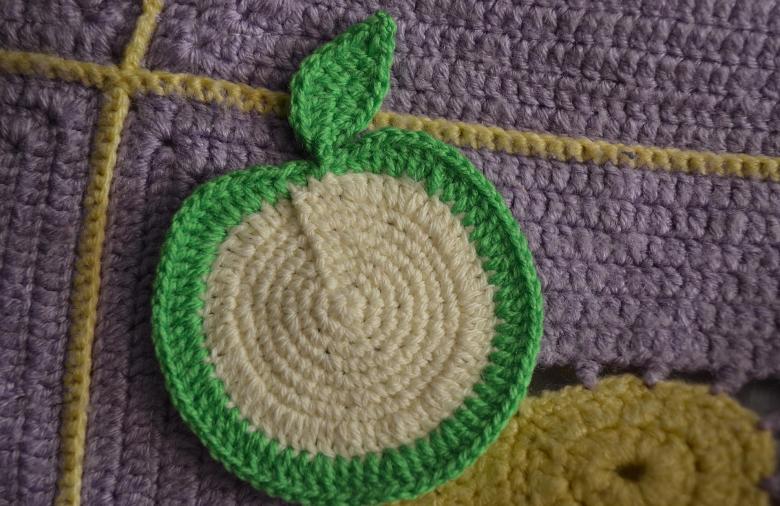
In conclusion, it is worth noting that the use of peas as a filler promotes the development of fine motor skills. Children enjoy playing with such fruits and vegetables. Filling with peas helps to make funny, fun rattles for infants.
